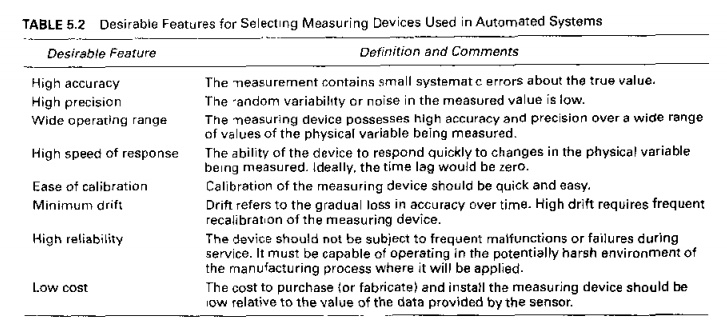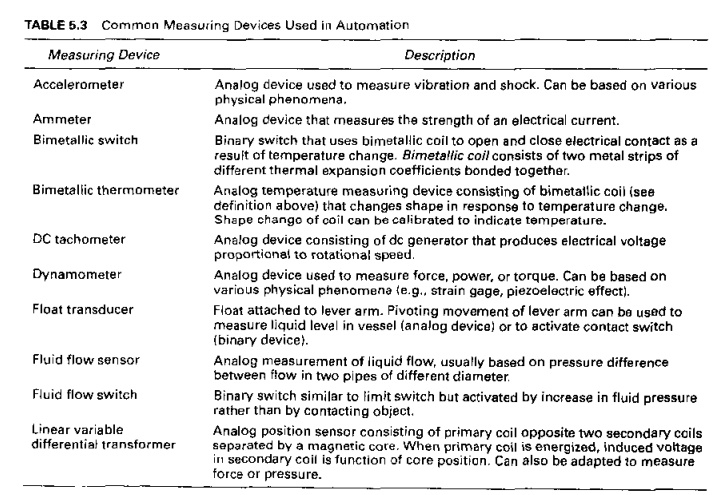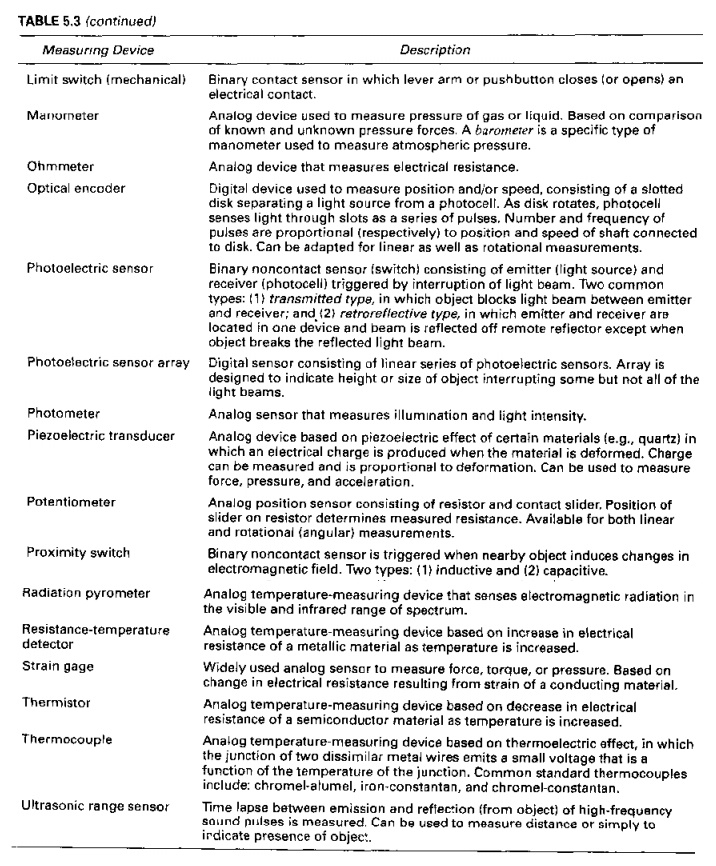Chapter: Automation, Production Systems, and Computer Integrated Manufacturing : Sensors, Actuators, and Other Control System Components
Sensors
SENSORS
A wide
variety of measuring devices is available for collecting data from the
manufactur ing process lor usc in feedback control. In general.a measuring
device is composed of two components: a sensor and a transducer. The sensor detects the physical variable of
interest (such astemperature. force. or pressure), The transducer converts the physical variable into an alternative form
(commonly electrical voltage),quantifying the variable in the con. version. The
quantified srgnat can be interpreted as the value of the measured variable. In
some cases, the sensor and transducer are the same device; for example, a limit
switch that converts the mechanical movement of a lever to close an electrical
contact.
To use
any measuring device. a calibration
procedure is required to establish the re lations.hip between the physical
variable to be measured and the converted output signal (such as voltage). The
ease with which the calibration procedure can be accomplished is one criterion
by which a measuring device can be evaluated. A list of desirable features of
measuring devices for process control is presented in Table 5.2. Few measuring
devices achieve perfect scores in all of these criteria. and the control system
engineer must decide which features are the most important in selecting among
the variety of available sensors and transducers for a given application
Consisreru
with our ctasstncartcn of process variables, measuring devices can be
classified into two basic categories: (1) analog and (2) discrete. An analog measuring device produces a
continuous analog signal such as electrical voltage. Examples are
thermocouples, strain gages.end potentiometers. The output signal from an
analog measuring device must be convened to digital data by an analogtodigital
converter (Section 5.3).A discrete
measuring device produces an output that can have only certain values, Discrete
sensor devices arc often divided into two categories: binary and digitaL A binary measuring device produces an
on/off signal.The most common devices operate by closing an electrical contact
from a normally open position. Limit switches operate in this manner. Other
binary sensors include photoelectric sensors and proximity switches. A digital measuring device produces a
digital output signal, either in the form of a set of parallel status bits [e.g
.•a photoelectric sensor array) or a series of pulses that can be counted
(e.g., an optical encoder). In either case, the digital signal represents the
quantity to be measured. Digital transducers are finding increased usc because
of the ease with which thev can be read when used as standalone measuring
instruments and because of their compatibility with digital computer systems.
Several of the common sensors and measuring devices used in industrial control
systems are listed in Table 5.3



Related Topics